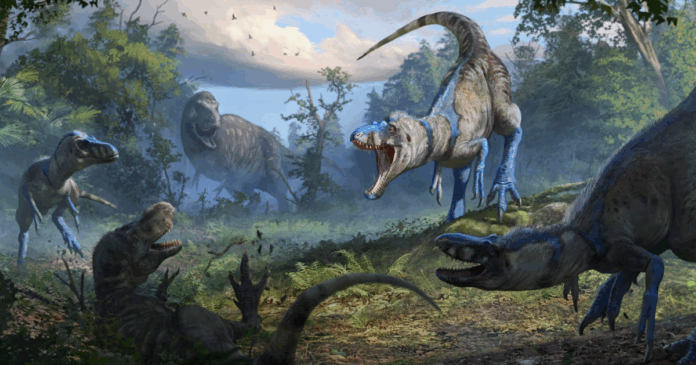More than 60 million years on from its final day on Earth, there’s a dinosaur we owe an apology. Paleontologists confirm that the Tyrannosaurus rex locked in combat with a Triceratops in the famous Dueling Dinosaurs specimen is not a T. rex after all.
In November, 2020, we celebrated the news that the Dueling Dinosaurs skeletons would be going on display for the first time, giving people a chance to see the remarkable entangled beasts thought to be in the throes of battle at the time of their deaths. But the dino that had been identified as a juvenile T. rex is apparently neither a youngster nor even in the genus of Tyrannosaurus.
Scientists from North Carolina State University (NCSU) have confirmed that the Triceratops’ combatant in the iconic Montana specimen is in fact a mature species of Nanotyrannus, known as N. lancensis.
“This fossil doesn’t just settle the debate. It flips decades of T. rex research on its head,” said study co-author Lindsay Zanno, associate research professor at NCSU, head of paleontology at the North Carolina Museum of Natural Sciences.
The researchers used growth rings, spinal fusion intel and other anatomical indicators to show that the dinosaur wasn’t a small T. rex but a mature and very different species, which they estimate to have been around 20 years old when it died. Certain clues – like tail vertebrae numbers and larger forearms – are not growth dependent, therefore ruling out the likelihood of this dinosaur being a young T. rex.
“For Nanotyrannus to be a juvenile T. rex, it would need to defy everything we know about vertebrate growth,” said study co-author James Napoli, anatomist at Stony Brook University. “It’s not just unlikely – it’s impossible.”
What’s more, the discovery could lead to even more research needing reassessment, with Nanotyrannus fossils having been studied as examples of young T. rex specimens.
While being 100% certain is a bold stance in paleontology, the researchers are confident in their findings, after examining more than 200 tyrannosaur fossils in this study. During this, they happened to notice that one teenage T. rex specimen was not at all a twin of the animal thought to be the same species in the Dueling Dinosaurs fossil.
Fittingly, the team gave the new species the name N. lethaeus – a reference to the River Lethe, known as the river of forgetfulness in Greek mythology. The researchers believe it pays homage to the fact this dino was hiding in plain sight for decades. (If only there was a Greek God of Misidentified Dinosaurs.)
And aside from the discovery of N. lethaeus setting the record straight, it also sheds light on the Late Cretaceous, indicating that there were more types of predators roaming the Earth than previously thought. And it begs the question: could there be more small-bodied dinosaurs that have been mistakenly identified as juveniles?
“This discovery paints a richer, more competitive picture of the last days of the dinosaurs,” Zanno said. “With enormous size, a powerful bite force and stereoscopic vision, T. rex was a formidable predator, but it did not reign uncontested. Darting alongside was Nanotyrannus – a leaner, swifter and more agile hunter.”
The research was published in the journal Nature.
Source: North Carolina State University


